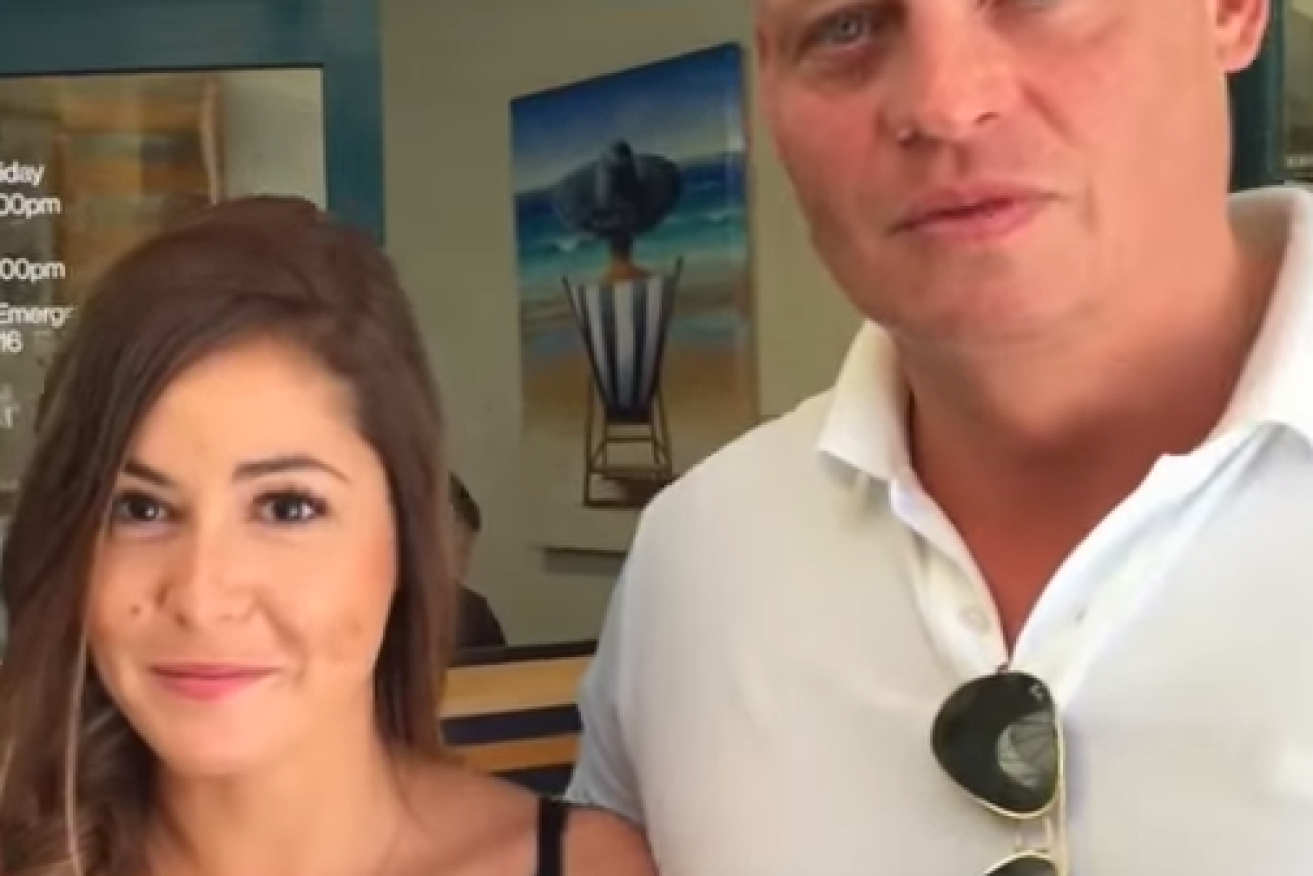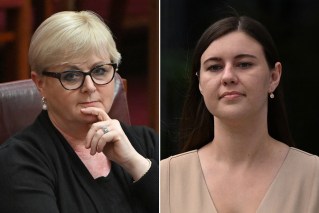How a beautiful French woman fooled the media

The pair
For editors around the country it was a story of ‘love at first sight’, but this tale of a pregnant tourist searching for her lost love had one fatal flaw.
It was a hoax all along, little more than a cynical ploy to sell holidays. And the media swallowed it whole.
• How hackers are able to hold your iPhone to ransom
• Ten tips for Dyson Heydon on how to use email
• Jarryd Hayne slams ‘false’ reports on his future

This is the pair who were behind the controversial marketing campaign.
It began when a video appeared on YouTube of a young French tourist beachside in Mooloolaba, Queensland. She was desperately looking for the father of her unborn baby.
“Today I am making this video because I need your help,” Natalie Amyot (real name Alizee Michel) said in the video.
“[On holiday in Mooloolaba], I met amazing people. On the last night, we had a party, we went to O’Malley’s and Wharf Tavern and I met this really cute guy.
“We had a beautiful night and the next morning I flew back to Paris and lost my phone with his number on it so I have no way to contact him and six weeks later I found out I was pregnant.
“So I have come back here to try and find him.”
She said she’d started a Facebook page to locate the father.
This sent media organisations clamouring to post the story, and giants of the Australian industry led their online editions with the ultimately tall tale.
But a video posted to the same YouTube channel almost two days later featured the campaign’s social media manager explaining the video was a hoax.
It turned out that Natalie Amyot was an actress and a local tourism company was behind the campaign.
“This has been a viral video, for Holiday Mooloolaba,” said marketer Andy Sellar. “I know there is gonna be a lot of you upset by this. She [Alizee Michel] had nothing to do with this … I just wanted to put Mooloolaba on the map.”
Guerilla marketing and journalism collide
The prank exposes a vulnerability in the Australian media that is now well-known to marketers.
Time-poor newsrooms searching for the next traffic hit leap into stories which appear to be highly shareable. The proper checks are either disregarded or not demanded amid the rush to get the piece produced, published and shared. And if everyone else is publishing it, where’s the shame in getting it wrong?
“It’s pretty sad and it goes on a lot,” University of Wollongong’s senior journalism lecturer Dr David Blackall told The New Daily.
“Newsrooms have lost their ability to interrogate stories. No one was capable or bothered to do the research to check it.
“Yes it is harmless in a way, there is no big agenda being run. But often stories are released coming from official sources like government even, and they’ll get a story run.
“But in the end it is a great way to distract the media.”
Many of Australia’s biggest news websites reported on the video, unaware it was fake. The New Daily considered Natalie Amyot’s story but chose not to publish.
Some people even exploit this failing in journalistic practise for fun. In May, Media Watch reported on serial prankster Lewis Spears, whose victims include Triple J, Today Tonight and 3AW. When asked about his Triple J hoax, he told the program:
“This is the fourth time in six months I’ve been in the news for a made-up story. I don’t even use a fake name anymore. I used to, but … I realised that journos never fact check, let alone Google people.”

Andy Sellar, the man at the centre of the marketing prank. Photo: Facebook
News site bites back
Indeed, one of the sites which ran the story was furious about it. Editor-in-chief of Fairfax’s Brisbane Times, Simon Holt, one of the first to run the story, slammed Mr Sellar in an editorial.
“Not only has Mr Sellar admitted to the exploitation of a young girl,” Mr Holt wrote.
“But he took the sales exercise into dangerous territory by talking on behalf of his ‘actor’ on social media.
“Despite the confession, some of the mud will stick … there’s every chance she’ll now be known to many as the irresponsible French girl happy to have unprotected sex during a one-night stand in Mooloolaba.”
Is all publicity good publicity?
While the media coverage earned Mooloolaba free airtime, that’s not always good news for the town, an advertising expert told The New Daily.
“Awareness does not always translate directly into bookings, and much of the online word of mouth I have seen is quite negative,” Queensland University of Technology researcher Dr Kate Letheren told The New Daily.
“It seems this has effectively increased awareness of Mooloolaba, but I think we have to question whether it’s actually going to lead to any positive outcomes for the town as a tourist destination.”
She also explained consumers do not like to de duped, nor should advertisers ethically aim to do so.
“Ethically, I do think it is important that marketers think through all possible stakeholders who might be affected by their campaigns: not just the responses of the consumers they are hoping to attract.”
#pregnancyhoax #Mooloolaba Real Estate agent Nigel Lucas reveals he got the inspiration for the video from fellow hoaxer #BelleGibson
— mysweetcaravan (@sweetsorento)
@sunriseon7 We have much more to offer than drunken sex & pregnancy. The world needs to know the best things about Mooloolaba. Not this.
— robynrhylsmith (@robynrhylsmith) September 2, 2015
The “Mooloolaba love” hoax was a flippant attempt at virality. If a campaign makes people upset then it’s just not the way to go. — UzzY (@020ne) September 2, 2015









